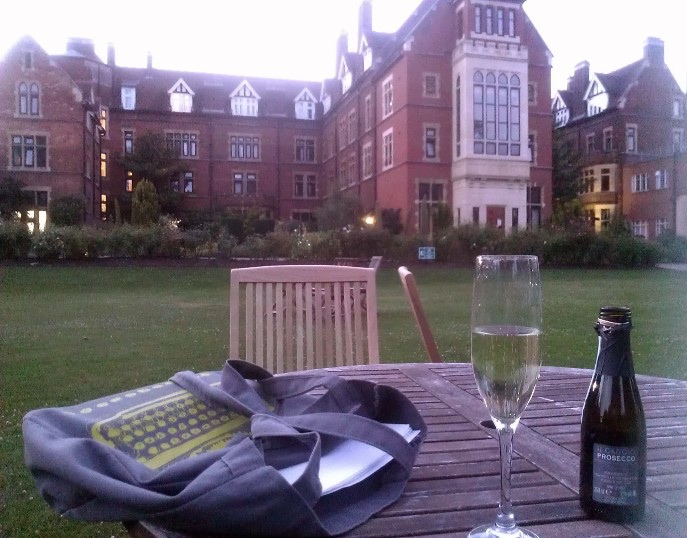Selin Kalostyan on Woolf’s Rooms
Some Notes on 'Woolf's Rooms'
Attending the literature summer course in Cambridge on Woolf’s Rooms last July [2017] could not have been more timely, nor too coincidental, for me, especially as a doctoral candidate in Comparative Literature concentrating on an oeuvre of Virginia Woolf’s as part of my current dissertation project.
Several rooms were discussed and lived in for a week of intensive study in the inspirational grounds of Homerton College, where participants from all walks of life came together to explore and discuss a large body of Woolf’s writings. We studied A Room of One's Own, Jacob's Room, To the Lighthouse, The Waves, Between the Acts.
And thus began our continued dialogue with Woolf’s Rooms. We touched upon furnished and empty rooms; cloistered rooms; history and genre as rooms; rooms suggesting boundaries and loss of boundaries; rooms that are potentially boundless and cheating the limitations of time; the stage as room; how books furnish rooms – among many other references and readings of rooms that figure in Woolf’s work – all discussed and studied with distinguished lecturers and supervisors from Cambridge University.
We took tea and read long passages from The Waves one lovely afternoon, the text enunciated by different voices and accents, in the individually communal room that we had built for ourselves through shared reading.
We took long walks discussing literature and art, broadening our intellectual rooms, while visiting the physical rooms in Girton, Newnham and King's College that became the subjects of many of Woolf’s works.
The smaller, more intimate room on the basement floor of the Fitzwilliam Museum, which houses the manuscript version of A Room of One’s Own, delighted us in surprising ways when we found ourselves within touching distance of the still lively inscriptions of purple ink breathing on thin leaves – a Cambridge moment of being!
'It is when the candles are lit the room changes', I jotted down in my note-pad during the morning lecture on To the Lighthouse, copying the words of our guest lecturer.
The 'shared moment of viewing' she alluded to in the text was rehearsed on our final evening in the candle-lit Fellows’ Dining Room where we all had a chance to admire the meticulous, intricate work of Kabe Wilson, whose anagrammatically titled Olivia N’Gowfri – Of One Woman or So, was spread on the display floor, Orlando-esque. Wilson’s evocative pre-dinner talk introducing his work accompanied our 'Cheers', mingling into undertones of staying in touch. As we said our good-byes later that evening, we were already beginning to taper off in different directions.
'All characters are united in the "lighthouse-being"' are words that were still resonating with me the following day, between acts of emptying my room and catching the London coach. On a rainy morning filled with much light and possibility.
Selin Kalostyan, New York.
Selin is a PhD candidate in Comparative Literature at the City University of New York and a Lecturer at Lehman College, New York.
The 2018 Woolf summer course is on Woolf and Politics, 1-6 July 2018.




